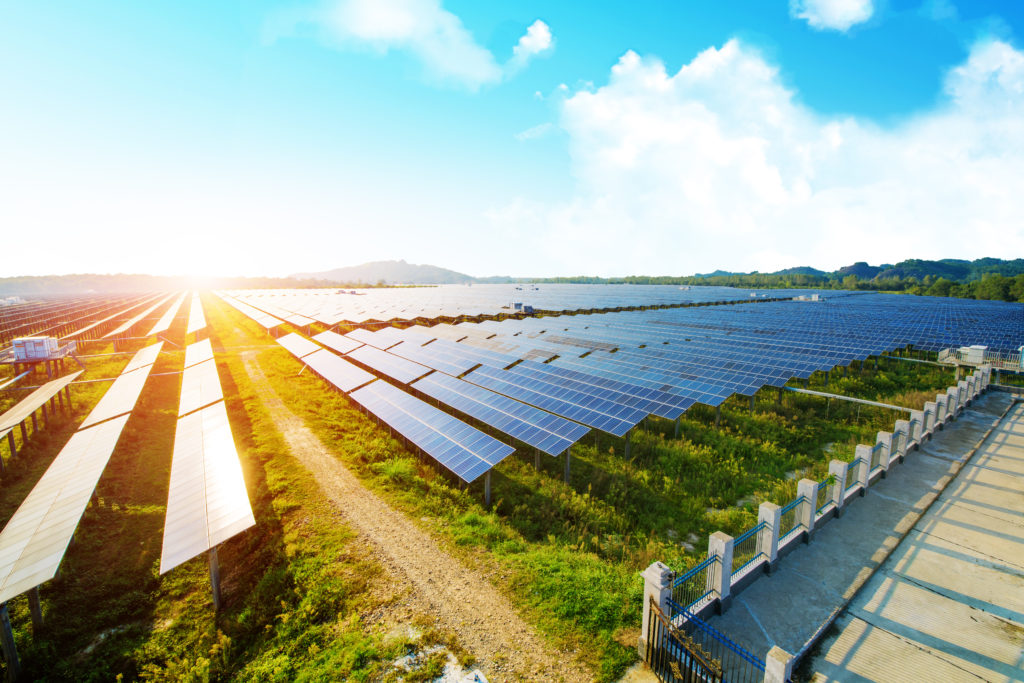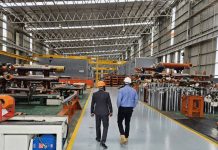The global consensus, on display at last month’s World Copper Conference, is that copper will play a vital part in the coming ‘fourth industrial revolution’. Other mining jurisdictions are preparing for the massive increase in demand that is anticipated. How should Zambia position itself?
Copper has a bright future
The fourth industrial revolution and its requisite green technology cannot be realised without copper. This was the overwhelming sentiment to come out of the preeminent World Copper Conference, held in Santiago, Chile in April 2019. Over the last decade, copper usage has exploded as the red metal’s unmatched conductivity, resistance to corrosion, and strength are harnessed for new technologies, with no end in sight.
The growth in demand for copper in the Electric Vehicle (EV) manufacturing industry is unparalleled, with EVs requiring twice as much copper as their combustion engine counterparts. The International Energy Agency predicts that we may have as many as 125 million electric vehicles on the road by 2030. Battery chemistry will continue to be a major growth area in EVs too. So far, attempts to replace the copper in lithium-ion batteries’ anodes with aluminium have been fruitless because lithium reacts with aluminium and corrodes it, only reinforcing copper’s appeal.
The growth in demand for copper in the Electric Vehicle (EV) manufacturing industry is unparalleled, with EVs requiring twice as much copper as their combustion engine counterparts.
Copper also dominates in the world of solar, where it is vital for the collection, storage and distribution of solar energy in photovoltaic (PV) solar power plants. One PV plant contains almost six tonnes of copper for every megawatt of power generation and is used for connecting voltages to the grid, conducting amperes, and even powering the motors that angle solar panels dynamically towards the sun. Wind turbine technology will also ensure copper’s dominance in electrical components where, again, aluminium, is a cheaper but less effective alternative.
“Smart home” technology is yet another area that’s expected to drive copper demand in future. The remote or manually-controlled heating, entertainment, and security systems that seem sufficient today will soon be replaced by holistic “smart-home systems” in which personal assistants like Amazon’s Alexa will centrally control homes, and the flick of every switch.
“We’ll need more copper to meet that demand,” said Anette Meyer Holley of BSRIA consultancy at the April 2019 conference. One thousand metres of wiring are often required to connect devices in smart homes, equating to approximately 20 kilograms (or 44 pounds) of copper, according to BSRIA estimates. Put differently, smart homes will consume around 1.5 million tonnes of copper by 2030. That’s around 40 times our current consumption.
The markets have responded
Naturally, expectations of increased demand have boosted prices. The outlook at the conference was bullish, with Morgan Stanley having already listed copper as its top pick among metals in a March 2019 report.
After the downturn in 2016, copper futures traded in New York reached a peak at the end of 2017, trading at the highest figures in over three years. That was enough to send several large copper projects that had been on hold since the downturn into the construction phase.
It’s illustrative of a classic resource cycle. “No one has copper coming now, when it is needed, but everyone has projects coming 2022 to 2023 – potentially after we’ve had to drive some substitution,” Colin Hamilton, managing editor for commodities at BMO Capital Markets, said at the conference.
“We’ll need more copper to meet that demand,” said Anette Meyer Holley of BSRIA consultancy at the April 2019 conference.
Anglo American is currently building its Quellaveco mine in Peru, which is expected to be productive by 2022. Teck Resources recently announced that its Chile-based Quebrada Blanca expansion will start producing in 2021. They join First Quantum Metals’ Cobre Panama mine, which began producing in early 2019. But despite these enormous projects, that are expected to add an additional one million tonnes of copper to the global inventory, demand will still outweigh supply in the coming years.
So, how is Zambia’s copper industry positioned to take advantage of these market developments?
Is Zambia prepared for the next boom?
In short, not well. There are no new world-class copper projects in Zambia, at any stage of development. This is because, for some years now, Zambia’s mining industry has been driving with the handbrake up, held back by its own erratic policy regime.
Exploration budgets are a mere 10-20% of the sums invested 10 years ago, so the prospects of finding a new ‘top ten’ world class deposit are slim. Furthermore, industry figures show that Zambian copper production is currently at around 800 000 tonnes, which is approximately 400 000 tonnes lower than the country projected for this period. This is a direct result of capital investment being pulled in recent years. Furthermore, Zambia’s 1st of January 2019 introduction of the steepest taxation regime among all of its peer jurisdictions is now, quite simply, strangling the industry of the investment needed for it to survive and grow.
Instead of ramping up production and playing a leading role as a copper supplier for the green revolution, production looks set to fall further and faster over the coming years. It is as if Zambia is knowingly moving in the opposite direction to the coming growth trajectory.
“Our initial forecast was that we’d see a moderate increase in production this year, but things have evolved a lot faster than expected,” said Sokwani Chilembo, CEO of the Zambia Chamber of Mines (ZCM).“We expect production to be flat at best, judging by the way this first quarter has gone.”

Capital allowance limitations have long constrained the mines’ ability to plough back capital into their operations, and this has been exacerbated by the changes to the fiscal regime. The disputed $8 billion tax bill that the Zambia Revenue Authority handed FQM last year saw the nation lose investment to Panama. Energy tariff increases have raised Zambia’s cost profile ahead of inflation, slowing the rate of growth.
Zambia’s smelters and refineries have been hard hit too by the introduction of an import duty on copper concentrate. Zambia’s own concentrate production does not meet the country’s smelting and refining capacity, and so more is needed from elsewhere. It’s also a matter of chemistry, as each smelter has a particular recipe, which often requires blending concentrates from different sources.
“Because of the new import duty there have been no concentrate imports from the DRC this year,” said Chilembo. “Not having that high-grade sulphide ore to blend in with our domestic concentrate has also led to inefficiencies. It’s reduced exports. And, in cases like Chambishi Metals, they’ve had to go on care and maintenance as a result.”
Turning to a growth mindset
Consultation between Zambian mining stakeholders and the government is urgently needed. The Chamber of Mines has put forward a raft of proposals on key issues such as the deductibility of mineral royalty tax, export duties, and import duties on ore from the DRC. In each case, compromises have been proposed, but the government has yet to provide feedback.
“The first thing we need to do is to come to a reasonable compromise on the fiscal regime,” said Chilembo. “We need to enable the industry to go out and secure financing for its operations, and to convince its own institutional investors and boards that this jurisdiction will be stable. We need a clearly defined way in which we can enable the growth of production and guarantee growth in government tax revenue.”
Instead of ramping up production and playing a leading role as a copper supplier for the green revolution, production looks set to fall further and faster over the coming years. It is as if Zambia is knowingly moving in the opposite direction to the coming growth trajectory.
Zambia’s economy stands to gain a lot from such a compromise. A fairer taxation regime that looks to the future – and resists the chronic short-termism that plagues so many struggling economies – could be a turning point for Zambia.
“If we get this right, we will see significant FDI coming here for the opening of one or two new medium tier mines,” said Chilembo. “If the industry’s power requirements grow, that automatically makes the energy sector more bankable because the mines are their biggest client.”
When a country’s mining industry grows in a steady, measured way, investment organically moves into other sectors. By Chilembo’s estimates, Zambia’s mining industry could attract upwards of $2 billion in greenfield FDI in the next five years, and far more in energy investments. The boost to the country’s economy would be nothing less than remarkable. Yet its own policies stand in its way.
“We know that the future of a modern, efficient digital world is copper,” said chief executive of Canadian mine Teck Resources Ltd, Don Lindsay, at the recent conference. But, without proper planning, the future will escape Zambia. In order to ensure that Zambia doesn’t spend the next decade catching up on the back end of the super cycle, policies need to be realigned with growth as a goal without delay.
This chimes with the reflections of Gerard Kambou, World Bank senior economist, who was quoted in the Zambian media recently following the Bank’s launch of its bi-annual analysis of Africa’s economies. According to him, Zambia has to boost copper production if it wants to grow its revenue base. In other words, Government revenues (i.e. taxes) and economic growth are dependent on encouraging increased copper production.
As things presently stand, the Chamber of Mines is expecting a gradual decline in copper production from 2020. Every pound in deficit is a pound that will be harnessed from another jurisdiction. Zambia’s mining industry – at the heart of which is copper – is faced with the opportunity of the century. How government and industry respond to this challenge will shape Zambia’s future.
See also: Zambia is taxing its way out of short-term pain and into long term injury


























